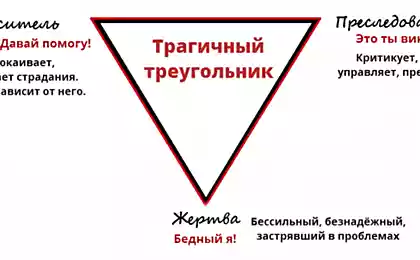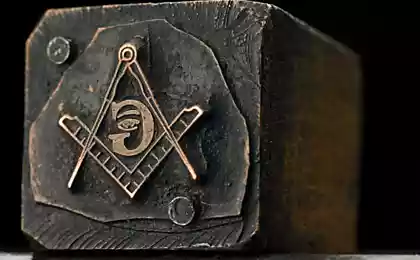814
Dubious deals in history
The most questionable deals in the history of Russian

GRAIN Hitler
January 10, 1941 the Soviet Union signed an agreement with Germany on the supply of grain Hitler regime. At that time it was the largest contract in the USSR and one of the most controversial. Remember the most dubious transaction in Russian history.
Under the contract, the Soviet Union pledged to supply not only Germany, coarse grains, but wheat. In 1940, the USSR was good harvests of wheat. Germany also was exported to the Soviet Union of military equipment and industrial machinery. However, under the terms of the agreement, the bread has to go to Germany on February 11, and German technology only May 11, 1941. Last Echelon with Soviet grain crossed the border for 1 hour and 15 minutes before the German attack.
Sale of Alaska
In the XVIII century Alaska undivided belonging to the Russian Empire. However, owning a remote area and unadapted, no way proved the northern lands, it became burdensome. "Sell - the surest way!" For a long time did not think ... The agreement was signed March 30, 1867 in Washington. Many of our citizens are distressed about the sale of the colony. They say it was one of the biggest mistakes in the history of the Russian state: for "gold mine of" requested "just something" 7, 2 million dollars. Subsequently, gold was discovered in Alaska began the famous gold rush and minerals extracted repeatedly exceeded the purchase price. This, of course, disappointing, but the main failure of the transaction is still in the other, "proceeds" from the sale of the money never made it to Russia. $ 7 million was transferred to the London bank transfer, and even from London to St. Petersburg by sea drove purchased for this amount of gold bullion. But disaster struck - bark Orkney, carrying the precious cargo was, July 16, 1868 sank on its way to St. Petersburg. Was it at that time, gold, or it does not leave the limits of Britain is unknown. The insurance company has insured the ship and cargo, declared itself bankrupt, and the damage has been compensated only in part.
SALE RUSSIAN CALIFORNIA
Russian colony in California Fort Ross was founded by members of the Russian-American Company in 1812. Russian colony was headed by the governor, who received housing and salary. Frenchman Augustin I. stuffiness Silla wrote in 1828 that 60 Russian, 80 kodyakov from Alaska and about 80 local Indians "living together." The main direction of the economy of the territory has been fishing for seals. However, the number of seals has been rapidly decreasing, and was made a bid for the cultivation of grain and livestock - food to Alaska and arriving ships. It was not crowned with particular success: due to natural conditions it was difficult to grow a good crop. The only thing that managed to do brilliantly, so it is to grow a huge orchard close to the fort with apple, pear, peach trees and vineyards - the garden is still alive and some trees about 200 years. The vineyard has become a springboard for planting vineyards throughout California and California grapes today considered one of the best.
Gradually, the Russian-American company came to the conclusion that sale of the colony: the number of seals declined steadily, agriculture was not as productive as in Russia, the Mexicans continued close Russian and demanded recognition of their republic, with which Nicholas I, an ardent supporter of absolute monarchy, I could not agree more. In 1839 the king approved the company's plan to liquidate the colony. But no one wanted to buy a colony - had hoped that the Russian themselves go. Only in 1841 Fort Ross was sold to the Mexican citizen of Swiss origin John Sutter of 43 thousand rubles in silver. In payment Sutter wheat delivered to Alaska, but was underpaid almost 38 thousand rubles. Thus Russian California was sold for only 5000 rubles.
December 31, 1841 Russian colony ceased to exist, and the contract of sale remains secret (as the king) until 1857.
DIAMONDS from the proletariat
In the early 1920s the Bolshevik government has launched a program to implement the so-called "Romanov" jewelry, which literally blew up the global jewelry market. At the beginning of the Bolsheviks had planned to lay values in European and American banks, but then it was decided to sell. Almost the majority of the treasure is gone for nothing - first, there was no such number of experts to a record in the shortest possible time to competently carry out an assessment audit, and, secondly, the Bolsheviks themselves, and especially not to focus on the true market price. Some jewelry was generally sold by weight. For example, a collector Norman Weiss bought things from the Diamond Fund in bulk: 10 kilograms "brilliant break" cost him only 50 thousand pounds.
British monopolies
In 1555, King John IV gave the British company Muskovy Company charter to besposhlennuyu trade wholesale and retail within the Russian state. Under the agreement, British traders were not subject to Russian jurisdiction and disputes resolved exclusively by the king. British traders undermined the development of the domestic economy, because in fact regulate prices. As a result, a few years later the British took control of the majority of the salt works in Russia. In addition, the British company did not give way on promising Russian market to other European powers. In fact, the activities of Muskovy Company won only the king, who received a "personal interest" with the export of British-Russian wax, hemp and salt. The monopoly lasted almost a hundred years and was eliminated only Alexis.
Soviet aid to third world countries
Since the post-war period, the Soviet Union as the strategy chosen to countries that have chosen a socialist path of development, or are not under the control of the United States. Soviet weapons helped, raw materials, technology and food and cash. In most cases, it was a real release of the money. Thus, shortly before the death of the Soviet Union, the total debt of all developing countries, the Soviet Union was 45,531, 8 million. Convertible rubles. Course convertible rubles (conditional monetary unit) was equal about 60-70 kopecks per dollar. In such "help" the USSR could build communism 1/6 of the land.
URANIUM CONTRACT
In February 1993, the leadership of our country has decided that enough to defeat the Iron Curtain, and has sold his opponent in the Cold War nuclear warheads. Russia and the US signed an agreement to sell 500 tonnes of uranium extracted from Russian nuclear warheads. Implementation of the agreement was calculated for a long period (over 10 years), and the total amount of the contract was estimated at $ 12 billion. Weapons-grade uranium has a concentration of more than 90%, but for the US It comes in a diluted form (depleted or natural uranium), so that the concentration was approximately 4%.
The transmitted uranium was intended only to be used as fuel for nuclear power plants. However, the "Lord of the origin" of uranium that is used previously in nuclear warheads, is a fundamental condition of the deal. Apparently cunning Smiths decided to disarm Ivanov ruble. "Uranium contract" became the subject of discussion in the Russian society. Someone protested against the corrupt tactics overseas neighbor, and some believed that the transaction price was too low.
©

GRAIN Hitler
January 10, 1941 the Soviet Union signed an agreement with Germany on the supply of grain Hitler regime. At that time it was the largest contract in the USSR and one of the most controversial. Remember the most dubious transaction in Russian history.
Under the contract, the Soviet Union pledged to supply not only Germany, coarse grains, but wheat. In 1940, the USSR was good harvests of wheat. Germany also was exported to the Soviet Union of military equipment and industrial machinery. However, under the terms of the agreement, the bread has to go to Germany on February 11, and German technology only May 11, 1941. Last Echelon with Soviet grain crossed the border for 1 hour and 15 minutes before the German attack.
Sale of Alaska
In the XVIII century Alaska undivided belonging to the Russian Empire. However, owning a remote area and unadapted, no way proved the northern lands, it became burdensome. "Sell - the surest way!" For a long time did not think ... The agreement was signed March 30, 1867 in Washington. Many of our citizens are distressed about the sale of the colony. They say it was one of the biggest mistakes in the history of the Russian state: for "gold mine of" requested "just something" 7, 2 million dollars. Subsequently, gold was discovered in Alaska began the famous gold rush and minerals extracted repeatedly exceeded the purchase price. This, of course, disappointing, but the main failure of the transaction is still in the other, "proceeds" from the sale of the money never made it to Russia. $ 7 million was transferred to the London bank transfer, and even from London to St. Petersburg by sea drove purchased for this amount of gold bullion. But disaster struck - bark Orkney, carrying the precious cargo was, July 16, 1868 sank on its way to St. Petersburg. Was it at that time, gold, or it does not leave the limits of Britain is unknown. The insurance company has insured the ship and cargo, declared itself bankrupt, and the damage has been compensated only in part.
SALE RUSSIAN CALIFORNIA
Russian colony in California Fort Ross was founded by members of the Russian-American Company in 1812. Russian colony was headed by the governor, who received housing and salary. Frenchman Augustin I. stuffiness Silla wrote in 1828 that 60 Russian, 80 kodyakov from Alaska and about 80 local Indians "living together." The main direction of the economy of the territory has been fishing for seals. However, the number of seals has been rapidly decreasing, and was made a bid for the cultivation of grain and livestock - food to Alaska and arriving ships. It was not crowned with particular success: due to natural conditions it was difficult to grow a good crop. The only thing that managed to do brilliantly, so it is to grow a huge orchard close to the fort with apple, pear, peach trees and vineyards - the garden is still alive and some trees about 200 years. The vineyard has become a springboard for planting vineyards throughout California and California grapes today considered one of the best.
Gradually, the Russian-American company came to the conclusion that sale of the colony: the number of seals declined steadily, agriculture was not as productive as in Russia, the Mexicans continued close Russian and demanded recognition of their republic, with which Nicholas I, an ardent supporter of absolute monarchy, I could not agree more. In 1839 the king approved the company's plan to liquidate the colony. But no one wanted to buy a colony - had hoped that the Russian themselves go. Only in 1841 Fort Ross was sold to the Mexican citizen of Swiss origin John Sutter of 43 thousand rubles in silver. In payment Sutter wheat delivered to Alaska, but was underpaid almost 38 thousand rubles. Thus Russian California was sold for only 5000 rubles.
December 31, 1841 Russian colony ceased to exist, and the contract of sale remains secret (as the king) until 1857.
DIAMONDS from the proletariat
In the early 1920s the Bolshevik government has launched a program to implement the so-called "Romanov" jewelry, which literally blew up the global jewelry market. At the beginning of the Bolsheviks had planned to lay values in European and American banks, but then it was decided to sell. Almost the majority of the treasure is gone for nothing - first, there was no such number of experts to a record in the shortest possible time to competently carry out an assessment audit, and, secondly, the Bolsheviks themselves, and especially not to focus on the true market price. Some jewelry was generally sold by weight. For example, a collector Norman Weiss bought things from the Diamond Fund in bulk: 10 kilograms "brilliant break" cost him only 50 thousand pounds.
British monopolies
In 1555, King John IV gave the British company Muskovy Company charter to besposhlennuyu trade wholesale and retail within the Russian state. Under the agreement, British traders were not subject to Russian jurisdiction and disputes resolved exclusively by the king. British traders undermined the development of the domestic economy, because in fact regulate prices. As a result, a few years later the British took control of the majority of the salt works in Russia. In addition, the British company did not give way on promising Russian market to other European powers. In fact, the activities of Muskovy Company won only the king, who received a "personal interest" with the export of British-Russian wax, hemp and salt. The monopoly lasted almost a hundred years and was eliminated only Alexis.
Soviet aid to third world countries
Since the post-war period, the Soviet Union as the strategy chosen to countries that have chosen a socialist path of development, or are not under the control of the United States. Soviet weapons helped, raw materials, technology and food and cash. In most cases, it was a real release of the money. Thus, shortly before the death of the Soviet Union, the total debt of all developing countries, the Soviet Union was 45,531, 8 million. Convertible rubles. Course convertible rubles (conditional monetary unit) was equal about 60-70 kopecks per dollar. In such "help" the USSR could build communism 1/6 of the land.
URANIUM CONTRACT
In February 1993, the leadership of our country has decided that enough to defeat the Iron Curtain, and has sold his opponent in the Cold War nuclear warheads. Russia and the US signed an agreement to sell 500 tonnes of uranium extracted from Russian nuclear warheads. Implementation of the agreement was calculated for a long period (over 10 years), and the total amount of the contract was estimated at $ 12 billion. Weapons-grade uranium has a concentration of more than 90%, but for the US It comes in a diluted form (depleted or natural uranium), so that the concentration was approximately 4%.
The transmitted uranium was intended only to be used as fuel for nuclear power plants. However, the "Lord of the origin" of uranium that is used previously in nuclear warheads, is a fundamental condition of the deal. Apparently cunning Smiths decided to disarm Ivanov ruble. "Uranium contract" became the subject of discussion in the Russian society. Someone protested against the corrupt tactics overseas neighbor, and some believed that the transaction price was too low.
©























